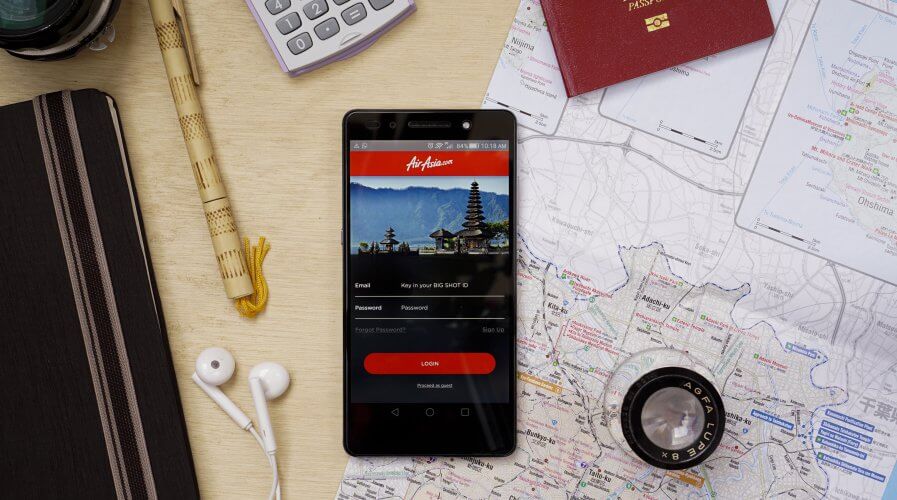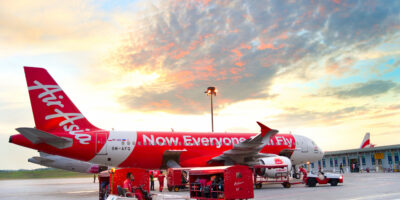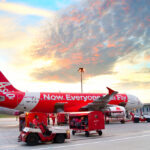
Here’s how AirAsia pivoted its airline business to survive the pandemic. Source: Shutterstock
AirAsia — a masterclass in business diversity?
- AirAsia has become much more than an airline — and that’s been key to its survival in 2020
Despite years of record traffic growth and unprecedented profitability, the airline industry wasn’t spared from its sharpest and most sustained fall in demand brought by the Covid-19 pandemic.
International travel has been at a virtual standstill, with a predicted net loss this year totaling a record US$84.3 billion. It will remain in the red throughout 2021, according to the International Air Transport Association (IATA).
But, like in any other industry, the savvy and forward-thinking can take advantage of even the most challenging of circumstances. AirAsia has thrived on this mindset and, keenly investing in technology to secure its lead in Asia’s low-cost carrier marketplace. A true entrepreneur, AirAsia founder and CEO Tony Fernandes took the disruption as an opportunity to work on evolving the brand’s digital products and services — including the rebrand of its all-in-one lifestyle platform — in efforts to generate income while planes were grounded while providing value to would-be travelers.
The app, airasia.com, offers more than 15 types of products and services within the bounds of travel, e-commerce, and fintech and already clocked 75 million users and 40 million downloads, as it seeks to become ASEAN’s ‘super app’.
“We democratized flying 19 years ago and enabled millions to travel, to explore. We pride ourselves in being a disruptive leader, connecting the Asean region, providing value, simplicity, and inclusivity, for everyone,” said Fernandes in a statement.
“Now with airasia.com, we are enabling everyone to fly, to stay, to shop, to eat, all at the convenience of one super app. We have not wasted the crisis, in fact, we’ve been using the lockdown period to finetune our platform, unify the user experience and simplify our payment to a one-click checkout,” he continued.
“Just like how we built AirAsia as a brand, airasia.com will emerge as the ASEAN super app, your best travel and lifestyle companion.”
A lesson in diversifying
AirAsia’s digital journey can be traced back to 2002 when it went wholly ticketless and rolled out online booking through its website. Soon after, it became the world’s first airline to offer SMS and mobile web booking services — allowing customers to move away from traditional ticketing and travel agents. It was also the first airline in Asia to implement the biometric facial recognition technology for flight boarding.
The budget airline has continued to invest heavily in digitalization, growing its digital services such as BIG Duty-Free, BIG Pay, BIG Loyalty, Rokki onboard WiFi, and Xcite inflight entertainment.
Among other airlines globally, AirAsia swiftly and effectively adopted chatbots to communicate with passengers when in 2019, it developed and launched an artificial intelligence-powered chat platform, AirAsia Virtual Allstar (AVA). AVA currently handles more than 80% of customer cases while the rest is transferred to a live agent who assists directly.
Fernandes certainly sticks closely to his words and has long focused on diversifying his business in a way that means if one arm is affected, another can offset the impact. Last year, he told Tech Wire Asia that the company can’t rely on airline earnings alone given the future volatility of oil prices, adding “if you don’t innovate, you die.” While passenger numbers plummeted this year, for example, the company repurposed its grounded 247s for its freight business Teleport, launching the world’s first blockchain-based digital air cargo network, Freightchain. In Q2 this year, Teleport contributed 42% to group revenue, its highest share ever.
Most recently, AirAsia announced the consolidation of all of its digital businesses — AirAsia.com, BigPay, Teleport, AirAsia BIG Rewards, and Santan — into one digital venture called AirAsia Digital, formerly known as RedBeat Ventures, which comprises an incubator for startups in platform, logistics, e-commerce, and financial services, a leadership and innovation academy, and a data consultancy department.
All of this has allowed AirAsia to endure the downturn better than local competitors. In June this year, AirAsia’s airline revenue declined 98%, but year-on-year revenue was up 137%.
READ MORE
- Safer Automation: How Sophic and Firmus Succeeded in Malaysia with MDEC’s Support
- Privilege granted, not gained: Intelligent authorization for enhanced infrastructure productivity
- Low-Code produces the Proof-of-Possibilities
- New Wearables Enable Staff to Work Faster and Safer
- Experts weigh in on Oracle’s departure from adland


